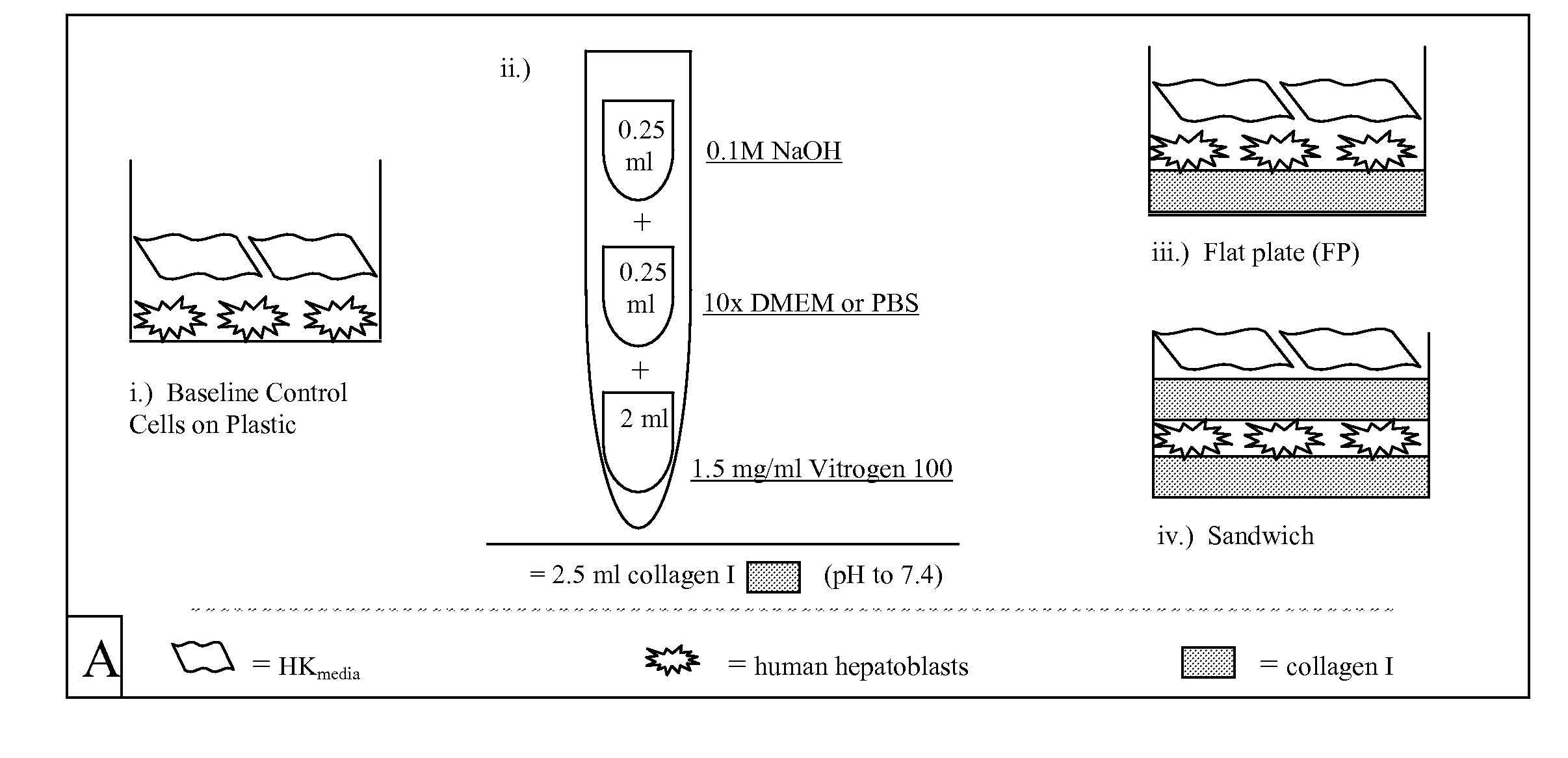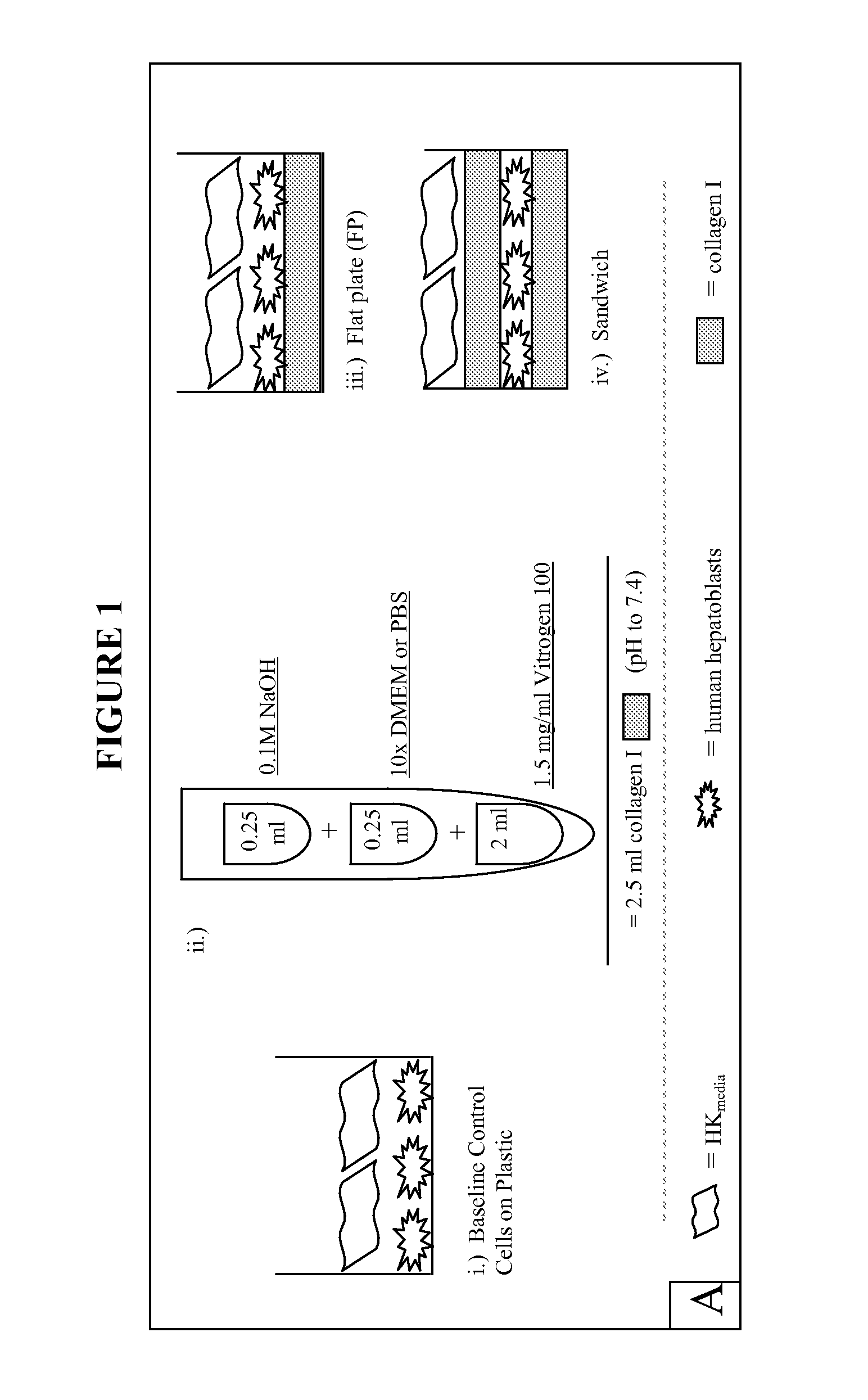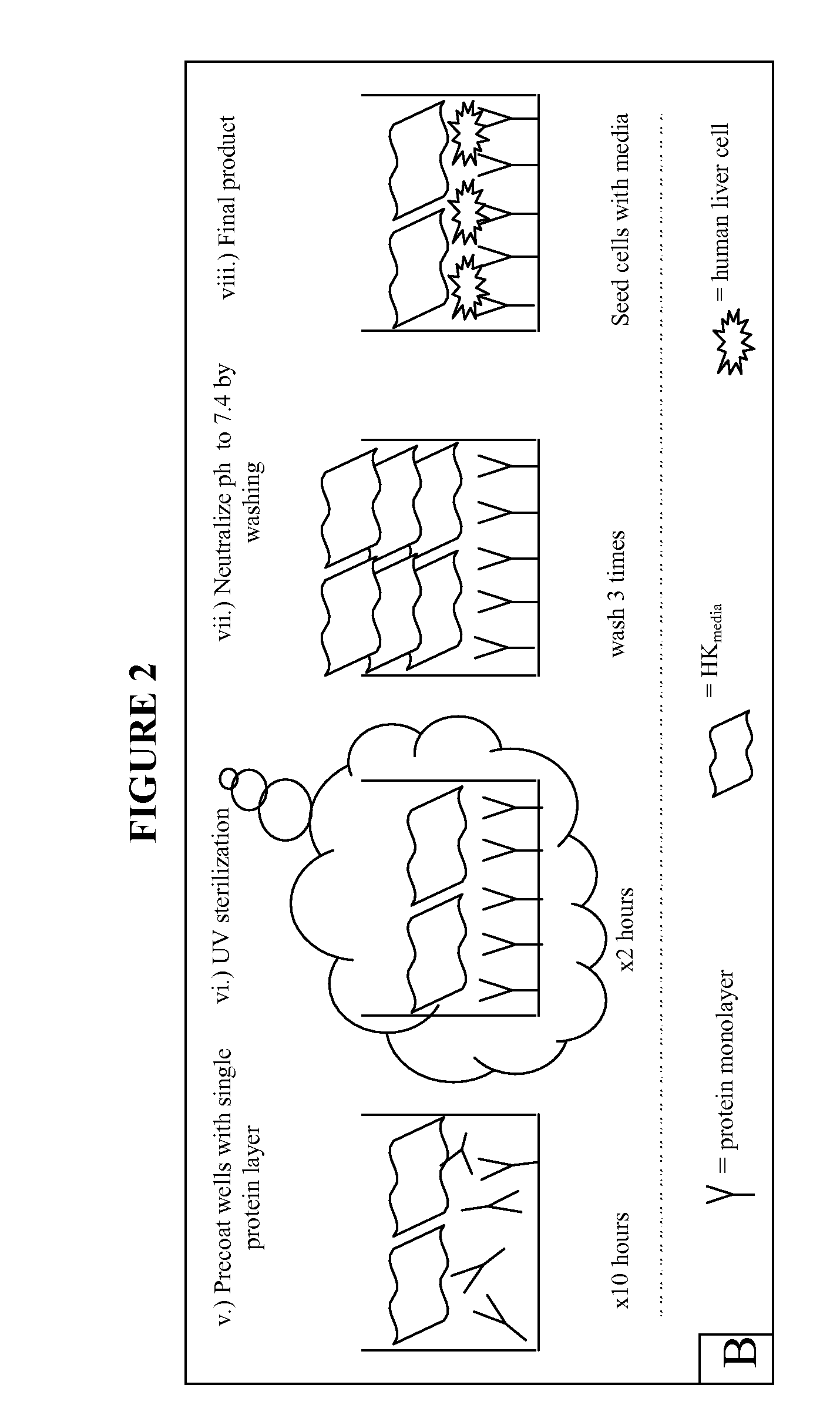Extracellular matrix components for expansion or differentiation of hepatic progenitors
a technology of extracellular matrix components and hepatic progenitors, which is applied in the field of ex vivo propagation or differentiation of hepatic progenitors, can solve the problems of reducing the propagation efficacy, challenging the ex vivo propagation of hepatic stem cells and their progeny, and not being able to transition from the laboratory bench to the clinic optimally
- Summary
- Abstract
- Description
- Claims
- Application Information
AI Technical Summary
Benefits of technology
Problems solved by technology
Method used
Image
Examples
examples
Media & Buffers
[0053] Unless otherwise noted, serum free media was used during processing of the liver tissue and maintenance of cell cultures. This media comprises 500 ml RPMI 1640 supplemented with 0.1% bovine serum albumin, Fraction V, 10 μg / ml bovine holo-transferrin (iron saturated), 5 μg / ml insulin, 500 μl selenium, 5 ml L-glutamine, 270 mg niacinamide, 5 ml AAS antibiotic, 500 μl hydrocortisone, 1.75 μl 2-mercaptoethanol and 38 μl of a mixture of free fatty acids prepared as published in U.S. patent application Ser. No. 09 / 678,953. The media is sterilized and its pH adjusted to 7.4 prior to use.
[0054]“Cell Wash Buffer” comprises 500 ml RPMI 1640 supplemented with 1% bovine serum albumin, 500 μl selenium and 5 ml of AAS Antibiotic. “Enzymatic Digestion Buffer” comprises 100 ml Cell Wash Buffer supplemented with 60 mg type IV collagenase and 30 mg DNase dissolved at 37° C.
Tissue Acquisition & Preparation
[0055] Liver tissue from human fetuses between 16-22 weeks gestationa...
PUM
 Login to View More
Login to View More Abstract
Description
Claims
Application Information
 Login to View More
Login to View More - R&D
- Intellectual Property
- Life Sciences
- Materials
- Tech Scout
- Unparalleled Data Quality
- Higher Quality Content
- 60% Fewer Hallucinations
Browse by: Latest US Patents, China's latest patents, Technical Efficacy Thesaurus, Application Domain, Technology Topic, Popular Technical Reports.
© 2025 PatSnap. All rights reserved.Legal|Privacy policy|Modern Slavery Act Transparency Statement|Sitemap|About US| Contact US: help@patsnap.com



